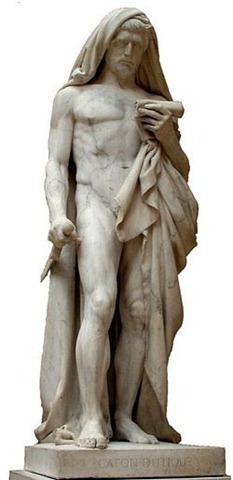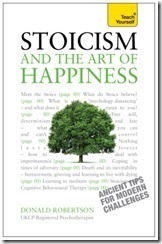Donald J. Robertson's Blog, page 78
May 7, 2013
How Spartan were the Stoics?
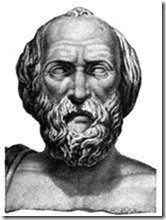 Copyright © Donald Robertson, 2013. All rights reserved.
Copyright © Donald Robertson, 2013. All rights reserved.
[At the moment this is still a draft, based on my rough notes but this seems to be an aspect of Stoicism that arouses much interest and controversy, so I’ve put them together in a blog article for others to comment upon. I’m aware of a few more references, I’ve yet to incorporate but please let me know of any other relevant information.]
Several modern scholars have argued that the Stoics were influenced by Spartan society. However, it must be emphasised from the outset that the evidence in this area is sparse and interpretation necessarily requires a degree of speculation. The sources upon which we must draw are also not 100% reliable. Nevertheless, there are a handful of quite striking references to the influence of Sparta on Stoic thought, which are worth considering.
The Spartans were famous for the fearsome training regime (agôgê) that they put all of their citizens through from age seven until they were aged about thirty, with the goal of making them ideal citizens and soldiers. The boys slept in a mess hall, on crude straw mats, and were given only a single garment, a cloak, to wear. They were trained to tolerate hunger and endure pain and physical discomfort, including being ritually beaten, and undertook physical exercise and training in the ancient martial arts. Certain key aspects of this notoriously severe “education” or training in the virtues of self-discipline and courage appear to have been emulated by the Cynic philosophers, and subsequently by the Stoics, as we’ll see below. You may have seen the highly-stylised (fantasy) portrayal of the agôgê in the opening scenes of the Hollywood film 300, about the famous Spartan battle of Thermopylae.
Sparta was also known as Lacedaemon, from which comes the adjective “laconic”, which we still use today to mean an artfully terse manner of speech. Zeno, the founder of Stoicism, was renowned for his abrupt style of speech, and notoriously compressed syllogistic arguments, and early Stoics perhaps sought to imitate the Spartans in this respect. Intriguingly, during a courtroom speech in which he criticises his friend Cato, the Roman statesman and Academic philosopher Cicero explicitly attributed Cato’s Stoic practices to “the Spartans, the originators of that way of living and that sort of language” (Pro Murena, 74). Cicero appears to take it for granted that his audience, including Cato, the “complete Stoic”, will recognise his depiction of Stoicism originating in the Spartan way of life as being relatively uncontroversial.
The Spartan Constitution
Zeno was a Phoenician from the town of Citium who arrived in Athens and founded Stoicism there. The neighbouring city-state of Sparta was at that time an enemy of the Athenian state. However, the Stoics appear to have admired the Spartans and Zeno’s account of the ideal Stoic Republic is thought by modern scholars to have been modelled primarily on ancient Sparta (Schofield, 1999). After being shipwrecked near Athens, Zeno, the founder of Stoicism, read about Socrates in Xenophon’s Memorabilia and was converted to the life of a philosopher. He therefore became a follower of the famous Cynic Crates, although he later studied also in the Platonic Academy under the scholarch Polemo. Zeno lived as a Cynic and embraced voluntary hardship and poverty, something which he apparently continued after founding the Stoa some twenty years after his own training in philosophy had commenced. Later, the Roman Stoic Epictetus would sum this aspect of Stoicism up neatly in his famous slogan: “Endure and renounce.”
Plato, Xenophon, and the Cynics also appear to have admired many aspects of Spartan society. Indeed, Diogenes the Cynic was known so much for praising the Spartan way of life that it’s said an Athenian once asked him sarcastically why he didn’t go and live among them instead, to which he replied that a doctor doesn’t carry out his role among the healthy (Anthology, 3.13). These important precursors may have influenced the Stoic interest in Sparta. According to the scholar P.A. Brunt, in his Studies in Stoicism (2013), “Old Sparta apparently evoked Stoic admiration, because of the strict and simple life prescribed by Lycurgus” (p. 287).
Chrysippus referred to men “who had reached a certain stage of progress and had come to this stage in certain disciplines (agôgai) and habits” . Agôgê was the subject of a work by Cleanthes (SVF I 481). The use of the term naturally brings to mind the Spartan agôgê , which Sphaerus in one at least of two books on Sparta, and which he helped to revive under Cleomenes III. Persaeus too wrote about Sparta, discoursing on their common meals. It seems probable that both of them shared, very probably with similar reservations, in Plato’s approval of the Spartan system of training the young for virtue. (p. 25, references omitted)
In his book, The Stoic Idea of the City (1999) Malcolm Schofield argues in a similar manner that Zeno’s Republic appears to have been heavily influenced by Cynic ideals about the simplicity and harmony of the ideal human community, and that Stoics appear to have looked to the idealised accounts of Spartan society as an inspiration in this regard. Schofield concludes that Zeno’s Republic was a somewhat more Spartan-influenced response to Plato’s famous dialogue of the same name. In the ideal Stoic Republic, men and women wore similar clothing, and there would be no need for money, temples, or law courts. However, there’s some evidence that Zeno, following the Cynics, envisaged the ideal society as having no need for weapons, which seems remarkably un-Spartan.
The Stoics appear to have believed that the ideal Republic was based on mutual love between wise friends, living in complete harmony with one another. However, perhaps more controversially, Schofield suggests that the early Stoics looked favourably on Spartan pederasty, something which may have contributed to the suppression of Zeno’s Republic and other writings by later generations of Stoics.
Zeno, like the Spartans, makes love a distinctive element in his political system. But it is a radically sublimated form of love (as in Plato); it is homosexual, but probably it can equally be heterosexual; and it has no connection with war. (Schofield, 1999, p. 56)
Although this perhaps involved some kind of intimate relationship between older and younger males, as in Sparta, it’s not clear whether it was consummated or not. The Spartans appear to have believed that intimate relationships between young men encouraged them to become greater warriors, although several ancient sources concur that this relationship was non-sexual and Zeno’s “dream” of the ideal Stoic Republic may likewise have entailed a form of “Platonic” love between older and younger males, perhaps like the relationship between Socrates and Alcibiades.
The Stoics, like many philosophers, appear to have particularly admired Lycurgus (820 – 730 BC) the semi-mythical founder of the Spartan constitution and the agôgê. The Academic philosopher Plutarch wrote a biographical account of Lycurgus in which he claimed the Spartan had seen very clearly that the welfare of any individual depends upon the concord and virtue in his city, which inspired him to develop the Spartan laws and constitution (Lycurgus, 31). However, Plutarch adds that this was the basis of various philosophical accounts of the ideal state, such as Plato’s Republic, and the ideal republics described by Diogenes the Cynic and Zeno, the founder of Stoicism, in his own Republic, which appears to have been the central text of early Stoicism. Persaeus and Sphaerus, two of Zeno’s most important students, also both wrote books called On the Spartan Constitution. Sphaerus also wrote thee volumes entitled On Lycurgus and Socrates, about the ancient founder of Sparta’s constitution. Sphaerus was the tutor of King Cleomenes III of Sparta, in his youth. He assisted Cleomenes’ attempts to restore the agôgê after it had perhaps fallen into some sort of decline (Brunt, p. 91).
The Spartan agôgê
 It’s not clear exactly why this is so but there are obvious similarities between the Spartan agôgê and the Cynic way of life, which influenced Zeno and subsequent Stoics.
It’s not clear exactly why this is so but there are obvious similarities between the Spartan agôgê and the Cynic way of life, which influenced Zeno and subsequent Stoics.
In his life of the Spartan legislator Lycurgus, Plutarch describes the way in which Spartan children were brought up: once they reached the age of twelve, they lived without any tunic, received only one cloak for the whole year, and slept on mattresses which they themselves had made out of reeds, The model of this style of life was strongly idealised by the philosophers, especially the Cynics and Stoics (Hadot, 1988, p. 7).
Hadot says that this idealisation was something of a “mirage” because Sparta was such a warlike, totalitarian state, where all citizens were trained to serve the state, whereas the Cynics and Stoics considered personal morality the goal of life.
From Spartan education, they retained only its training for perseverance, its return to a natural life, and its contempt for social conventions. (Hadot, 1988, p. 8)
However, following Socrates, philosophers of the Cynic and Stoic schools, which some ancient authors place in the same “succession” or lineage, dressed in a similar manner, wearing the famous rough, grey, “philosopher’s cloak”, which Hadot believed was Spartan in origin.
One might add that the philosophers’ cloak (Greek tribôn, Latin pallium) worn by the young Marcus Aurelius was none other than the Spartan cloak, made of coarse cloth, that had been adopted by Socrates, Antisthenes, Diogenes, and the philosophers of the Cynic and Stoic tradition. (Hadot, 1988, p. 8).
In other words, this interest in Sparta may span the whole history of Stoicism, enduring for five centuries, from Zeno its founder to the Roman Emperor Marcus Aurelius, the last famous Stoic, who even dressed in a similar manner, perhaps in emulation of the Spartans.
The Roman Stoics
The most highly-regarded Stoic teacher of the Roman imperial period, Musonius Rufus, says that a youth brought up “in a somewhat Spartan manner”, who is not accustomed to soft living, will be more able to absorb the teachings of a philosopher that death, pain, and poverty are not evils and their opposites are not good (Lectures, 1). He links this to an anecdote about Cleanthes, the second head of the Stoa, and a Spartan boy, who had been trained well for virtue and therefore easily grasped Stoic philosophy at a practical level. Elsewhere he tells his students that Spartan boys who are whipped in public without shame or feelings of injury set a good example for Stoics, insofar as philosophers must be able to scorn blows and jeering, and ultimately even death (Lectures, 10).
He called the ancient Spartans the very best of the Greeks and praised Lycurgus as one of the greatest of all law-makers, because of the austere lifestyle he instigated for Spartan youths, which he encourages his own students to emulate, particularly noting those aspects most akin to the tough Cynic lifestyle, often admired by Stoics.
Consider the greatest of the law-givers. Lycurgus, one of the foremost among them, drove extravagance out of Sparta and introduced thriftiness. In order to make Spartans brave, he promoted scarcity rather than excess in their lifestyle. He rejected luxurious living as a scourge and promoted a willingness to endure pain as a blessing. That Lycurgus was right is shown by the toughness of the young Spartan boys who were trained to endure hunger, thirst, cold, beatings, and other hardships. Raised in a strict environment, the ancient Spartans were thought to be and in fact were the best of the Greeks, and they made their very poverty more enviable than the king of Persia’s wealth. (Musonius Rufus, Lectures, 20)
Musonius’ most famous student was Epictetus, who became an influential Stoic teacher in his own right. Indeed, Epictetus is the only Stoic teacher whose teachings survive today in book-length, although half of the Discourses recorded by his student Arrian are lost, We have a fragment from the anthologist Stobaeus in which either Epictetus or Musonius Rufus, the attribution is unclear, is seen also to praise the personal example set by Lycurgus:
Who among us is not amazed at the action of Lycurgus the Spartan? When a young man who had injured Lycurgus’ eye was sent by the people to be punished in whatever way Lycurgus wanted, he did not punish him. He instead both educated him and made him a good man, after which he led him to the theatre. While the Spartans looked on in amazement, he said: “This person I received from you as an unruly and violent individual. I give him back to you as a good man and proper citizen.” (Stobaeus, 3.19.13)
The last famous Stoic, the Roman Emperor Marcus Aurelius, was largely influenced by the teachings of Epictetus in his practice of Stoicism. Although he does phrase it in an ambiguous manner, at the start of the Meditations, Marcus appears to praise someone called Diognetus for introducing him, in his youth, to a lifestyle based on the agôgê “and to set my heart on a pallet-bed and an animal pelt” (Meditations, 1.6). Again, this appears to suggest that, as a Stoic, he sought to emulate certain aspects of the Spartan training regime and lifestyle, presumably as a means of training himself in the virtues of courage (or endurance) and self-discipline.
Filed under: Stoicism Tagged: Cynicism, Sparta, Spartan, Stoic philosophy, stoicism








May 5, 2013
Stoic Week 2012: The Student View
Stoic Week 2012: The Student View
Christopher Thompsett, first year undergraduate student of Classics at Exeter University, offers his view of the Live like a Stoic trial, 2012.
Filed under: Stoicism Tagged: Stoic philosophy, stoicism








May 2, 2013
Roundup of Recent Posts (May 2013)
New Stoa: Interview with Donald Robertson about Stoicism and Cognitive-Behavioural Therapy (CBT)
New Stoa: Interview with Donald Robertson about Stoicism and Cognitive-Behavioural Therapy (CBT)
This is an interview I did for the New Stoa about Stoic philosophy and modern psychological therapy, etc.
Filed under: Stoicism Tagged: cbt, psychotherapy, Stoic philosophy, stoicism








April 9, 2013
New Video on Ancient Philosophy & Health Research from University of Exeter
New video clip about research on ancient philosophy and healthcare from the University of Exeter, featuring Professor Christopher Gill.
Filed under: News, Stoicism Tagged: Stoic philosophy, stoicism, video








New Video on Stoicism Research from University of Exeter
New video clip about Stoicism research from the University of Exeter, featuring Professor Christopher Gill.
Filed under: News, Stoicism Tagged: Stoic philosophy, stoicism, video








April 7, 2013
Zeno meets King Antigonus (Excerpt from Teach Yourself Stoicism)
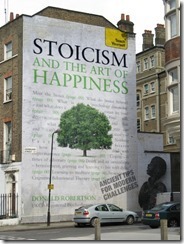 Copyright © Donald Robertson, 2013. All rights reserved.
Copyright © Donald Robertson, 2013. All rights reserved.
Excerpt from Teach Yourself Stoicism and the Art of Happiness (2013).
Following on from his example of a musician, a cithara-player, with stage fright, anxiety about impressing his audience, Epictetus refers to the contrasting example of Zeno of Citium, the founder of Stoicism. Zeno had some intensive training in overcoming social anxiety when he first began to study philosophy, and attached himself to the great Cynic philosopher Crates of Thebes. We’re told, after his shipwreck, as he wandered Athens penniless, at first he felt overly-concerned about what others would think of him. So one day Crates asked him to carry a clay pot full of lentil soup through the busy crowds in the potters’ district in Athens. This sort of thing was actually a common Cynic exercise in developing “shamelessness”. Zeno was worried looking foolish and tried to conceal the pot under his cloak. When Crates spotted this he smashed it with his staff, splattering the soup all over Zeno’s body, so it ran down his legs. “Courage my little Phoenician”, said Crates, “it’s nothing terrible, only soup!” In modern CBT deliberate “shame-attacking” exercises, such as walking around a shopping centre with a banana on a leash, are sometimes used to help people progressively overcome their sense of shame about looking foolish in public.
Anyway, repeated exercises like these eventually seem to have cured Zeno of his self-consciousness, as Epictetus advises us to contemplate his exemplary lack of anxiety when meeting the powerful Macedonian king Antigonus II Gonatas, several decades later. Antigonus was the ruler of many lands, and a powerful military leader, who sought the company of intellectuals and philosophers, including some Cynics. He travelled to Athens several times to listen to Zeno teach at the Stoa Poikilê. According to the story, Zeno was completely unconcerned when first meeting him because Antigonus had power over absolutely nothing that Zeno saw as important in life, and Zeno desired nothing that Antigonus possessed. Antigonus was more anxious about meeting Zeno, because he desired to make a good impression on the philosopher, although that was beyond his direct control. There’s a famous legend, almost certainly a myth, that Alexander the Great once visited Diogenes the Cynic, whom he greatly admired, and asked if he could do anything for him. Notoriously, Diogenes was said to have replied: “Yes, could you step aside, you’re blocking the sunlight right now.” In both these stories, a great king, despite his material wealth and power, is suddenly reduced in status when faced with a penniless philosopher who’s completely “indifferent” to external things.
As Chrysippus reputedly said, the famous Stoic paradox would have it that “Besides being free the wise are also kings, since kingship is rule that is answerable to no one” (Laertius, Lives, 7.122). Zeno was the true “king” here, because he needed nothing except virtue, which was entirely under his own rule; whereas Antigonus was a king only over “indifferent” external things, and perhaps, like most people, still a slave with regard to his own passions. According to Plutarch, Antigonus became particularly attached to the teachings of Zeno, and he may well have considered himself an aspiring Stoic. We’re told he later wrote to Zeno pleading him to travel to Macedonia and become his personal tutor. By that time Zeno was too old and frail to make the journey himself so he sent Persaeus instead, one of his best students (Laertius, Lives, 7.6). Antigonus reputedly wrote him a letter saying: “While in fortune and fame I deem myself your superior, in reason and education I own myself inferior, as well as in the perfect Happiness [eudaimonia] which you have attained.”
Filed under: Excerpts, Stoicism Tagged: book, books, Stoic philosophy, stoicism








April 5, 2013
New Book – Teach Yourself: Stoicism and the Art of Happiness (2013)
Stoicism and the Art of Happiness (2013)
Due for publication by Hodder, autumn 2013. ISBN: 9781444187106. You can pre-order online from the publisher.
This new addition to Hodder’s popular Teach Yourself series provides a detailed introduction to Stoic philosophy, with particular emphasis on applying Stoic ethics and therapy to modern living. Donald Robertson is a registered psychotherapist, specialising in cognitive-behavioural therapy (CBT) for anxiety and other evidence-based approaches, with a background in academic philosophy. He is the author of four previous books, two of which also deal with Stoicism and its relation to modern psychology and psychotherapy:
The Philosophy of Cognitive-Behavioural Therapy (CBT): Stoic Philosophy as Rational and Cognitive Psychotherapy (2010)
Teach Yourself: Build your Resilience (2012)
Stoicism and the Art of Happiness is the product of Donald’s experience over the past fifteen years, in his attempt to integrate the ancient wisdom of Stoic philosophy with modern evidence-based approaches to psychological therapy and stress management.
Chapters Include
Modern Stoicism
The Way of the Stoic: “Follow Nature”
The Promise of Philosophy (Eudaimona)
Interlude: Meet the Stoics
Stoic Ethics: The Nature of the Good
The Discipline of Judgement (Stoic Mindfulness)
Self-Awareness & the “Stoic Fork”
The Discipline of Desire (Stoic Acceptance)
Stoic Psychotherapy (Fear & Desire)
The View from Above & Stoic Cosmology
The Discipline of Action (Stoic Philanthropy)
Appropriate Action & the Reserve Clause
Love & Friendship in Stoicism
The Morning & Evening Meditations
Premeditation of Adversity
Contemplation of Death
Contemplation of the Sage
Filed under: News, Stoicism Tagged: book, books, happiness, Stoic philosophy, stoicism








March 28, 2013
The Sale of Diogenes the Cynic by Pirates
 Diogenes of Sinope, the founder of Cynicism was greatly admired by the Stoics as a near-sage. The two schools were sometimes even considered part of a single “Cynic-Stoic” tradition. Diogenes became a legendary character and many stories and anecdotes circulated about him in the ancient world, contributing to his status as a Stoic role-model. According to Epictetus, “Diogenes was set free by Antisthenes, and said that from that point forward he could never be enslaved by anyone again”, meaning that he was set free by the Socratic philosophy of Antisthenes (Discourses, 4.1). He goes on to discuss the particularly well-known, although probably fictitious, story about Diogenes being captured by pirates, which apparently came from a book called The Sale of Diogenes by the 3rd century BC Cynic philosopher and satirist Menippus. The story goes that Diogenes was captured by the notorious pirate captain Skirpalos and his crew, while sailing to the island of Aegina. His captors were initially quite brutal to Diogenes and the other captives, giving them barely enough food to survive but he bore his misfortune well, rising above their maltreatment with greatness of spirit. Unintimidated as always, he rebuked the pirates saying that if one has pigs or sheep to sell, one fattens them up and keeps them healthy, yet they kept the finest of animals, human beings, on sparse food, until they were reduced to skeletons and worthless to sell. Listening to reason, the pirates began to feed all their prisoners better.
Diogenes of Sinope, the founder of Cynicism was greatly admired by the Stoics as a near-sage. The two schools were sometimes even considered part of a single “Cynic-Stoic” tradition. Diogenes became a legendary character and many stories and anecdotes circulated about him in the ancient world, contributing to his status as a Stoic role-model. According to Epictetus, “Diogenes was set free by Antisthenes, and said that from that point forward he could never be enslaved by anyone again”, meaning that he was set free by the Socratic philosophy of Antisthenes (Discourses, 4.1). He goes on to discuss the particularly well-known, although probably fictitious, story about Diogenes being captured by pirates, which apparently came from a book called The Sale of Diogenes by the 3rd century BC Cynic philosopher and satirist Menippus. The story goes that Diogenes was captured by the notorious pirate captain Skirpalos and his crew, while sailing to the island of Aegina. His captors were initially quite brutal to Diogenes and the other captives, giving them barely enough food to survive but he bore his misfortune well, rising above their maltreatment with greatness of spirit. Unintimidated as always, he rebuked the pirates saying that if one has pigs or sheep to sell, one fattens them up and keeps them healthy, yet they kept the finest of animals, human beings, on sparse food, until they were reduced to skeletons and worthless to sell. Listening to reason, the pirates began to feed all their prisoners better.
They took him to Crete where he was put up for auction as a slave. Just before the sale began he sat down to share some bread with the other prisoners, who were weeping at their misfortune. Seeing one man was too upset to eat, Diogenes reassured him, urging him to have some food, and telling him to stop worrying and just take the moment as it comes. Such auctions typically began by asking where the slave was from to which Diogenes gave his standard reply, that he was from “everywhere”, being a citizen of the world, the original meaning of “cosmopolitan”. After making fun of the auctioneer by laying down and pretending to be a fish, in typical Diogenes style, he then berated the audience, giving them a lecture on how to go about buying men. He said that if they are buying a pot or plate, or presumably a fish, they test first that it is good quality but when buying men they merely look them over rather than testing their character properly. When the then auctioneer asked him what he was skilled at, Diogenes replied “Governing men”, much to everyone’s amusement. Diogenes then pointed out a wealthy Corinthian man in the audience, called Xeniades, who was dressed in rather ornate robes, saying “Sell me to that man, he could do with a master!” Somehow, Diogenes had managed to invert the whole situation by acting as if he were the one shopping for a “slave” to govern.
Perhaps surprisingly, Diogenes was purchased by Xeniades who took him back to Corinth where he put him in charge of his children and whole household, where he immediately set about telling them how to run their lives, what clothes to wear, etc., and overseeing the athletic training of Xeniades’ sons. Although Diogenes trained them to live simply and to endure hardship, the boys apparently loved their teacher. He reputedly turned down the opportunity to be ransomed by his friends. Diogenes did such a good job that Xeniades said it was as if his house had been blessed with a good “guardian-spirit” and the philosopher stayed on there until his death. Xeniades sometimes complained that by being bossed around by his own slave things had become somewhat back-to-front, as if Diogenes had become the master and Xeniades his slave. Diogenes gave the philosophical reply that Xeniades should obey his instructions, based on his expertise in the art of living, just as even if a doctor or a navigator were a slave, their advice would still be followed. The point of the story seems to be that Diogenes wisdom and virtue made him a natural ruler, a true king, whatever his unfortunate external circumstances, and this was bound to shine through. Where someone has expertise we should listen to them, regardless of their status, and Diogenes had expertise in the art of living.
Filed under: Cynicism, Stoicism Tagged: Cynic, Cynicism, Diogenes the Cynic, stoic, stoicism








March 25, 2013
The Choice of Hercules in Stoicism
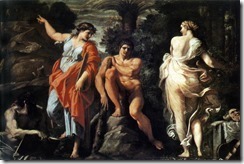 Copyright © Donald Robertson, 2013. All rights reserved.
Copyright © Donald Robertson, 2013. All rights reserved.
Zeno was reputedly inspired to study philosophy after reading the second book of Xenophon’s Memorablia of Socrates. This actually begins with a chapter in which Socrates recounts a story known as “The Choice of Hercules” (or “Heracles” to the Greeks), attributed to the highly-regarded ancient sophist Prodicus (Memorabilia, 2.1). Antisthenes, the Cynics, and the Stoics apparently all agreed that Hercules, the greatest of Zeus’ sons, provided an ideal example of the self-discipline and endurance required to be a true philosopher. The story symbolises the great challenge of deciding whom we actually want to be in life, what type of life we want to live, the promise of philosophy, and the temptation of vice. Zeno himself was perhaps compared to Hercules by his followers and we know that his successor Cleanthes was dubbed “a second Hercules”, on account of his self-mastery.
The story goes that Hercules, when a young man, found himself at an isolated fork in the road, where he sat to contemplate his future. Uncertain which path to take in life he found himself confronted by two goddesses. One, a very beautiful and alluring woman, was called Kakia, although she claimed that her friends call her “Happiness” (Eudaimonia). She charged in front to ensure she spoke first, promising him that her path was “easiest and pleasantest”, and that it provided a short-cut to “Happiness”. She claimed he would avoid hardship and enjoy luxury beyond most men’s wildest dreams, produced by the labour of others. After hearing this, Hercules was approached by the second goddess, called Aretê, a plain-dressed and humble woman, though naturally beautiful. To his surprise, she told him that her path would require hard work from him and it would be “long and difficult”. In fact the path Hercules chose would be dangerous beyond belief, he would be tested by many hardships, perhaps more than any man who had lived before, and have to endure great loss and suffering along the way. “Nothing that is really good and admirable”, said Aretê, “is granted by the gods to men without some effort and application.” However, Hercules would have the opportunity to face each adversity with courage and self-discipline, and of showing wisdom and justice despite great danger. He would earn true Happiness by reflecting on his own praiseworthy and honourable deeds.
Hercules, of course, chose the path of Aretê or “Virtue” and was not seduced by Kakia or “Vice”. He faced continual persecution, from the goddess Hera and her minions, and was forced to undertake the legendary Twelve Labours, including slaying the Hydra and ultimately entering Hades, the Underworld itself, to capture Cerberus with his bare hands. He died in the most extreme agony, poisoned by clothing soaked in the Hydra’s blood. However, Zeus was so impressed by his greatness of soul that he elevated him to the status of a God in his own right. Of course, the Stoics took this all as a kind of metaphor for the good life: that it’s better to face hardships, rise above them, and thereby excel, than to embrace easy-living and idleness, and allow your soul to shrink and deteriorate as a result. It would therefore make sense if Socrates retelling of “The Choice of Hercules” was indeed the part of the Memorabilia that inspired Zeno’s conversion to the life of a philosopher. However, it may certainly have served this purpose for later generations of Stoics.
Filed under: Excerpts, Stoicism Tagged: Heracles, Hercules, Stoic philosophy, stoicism









